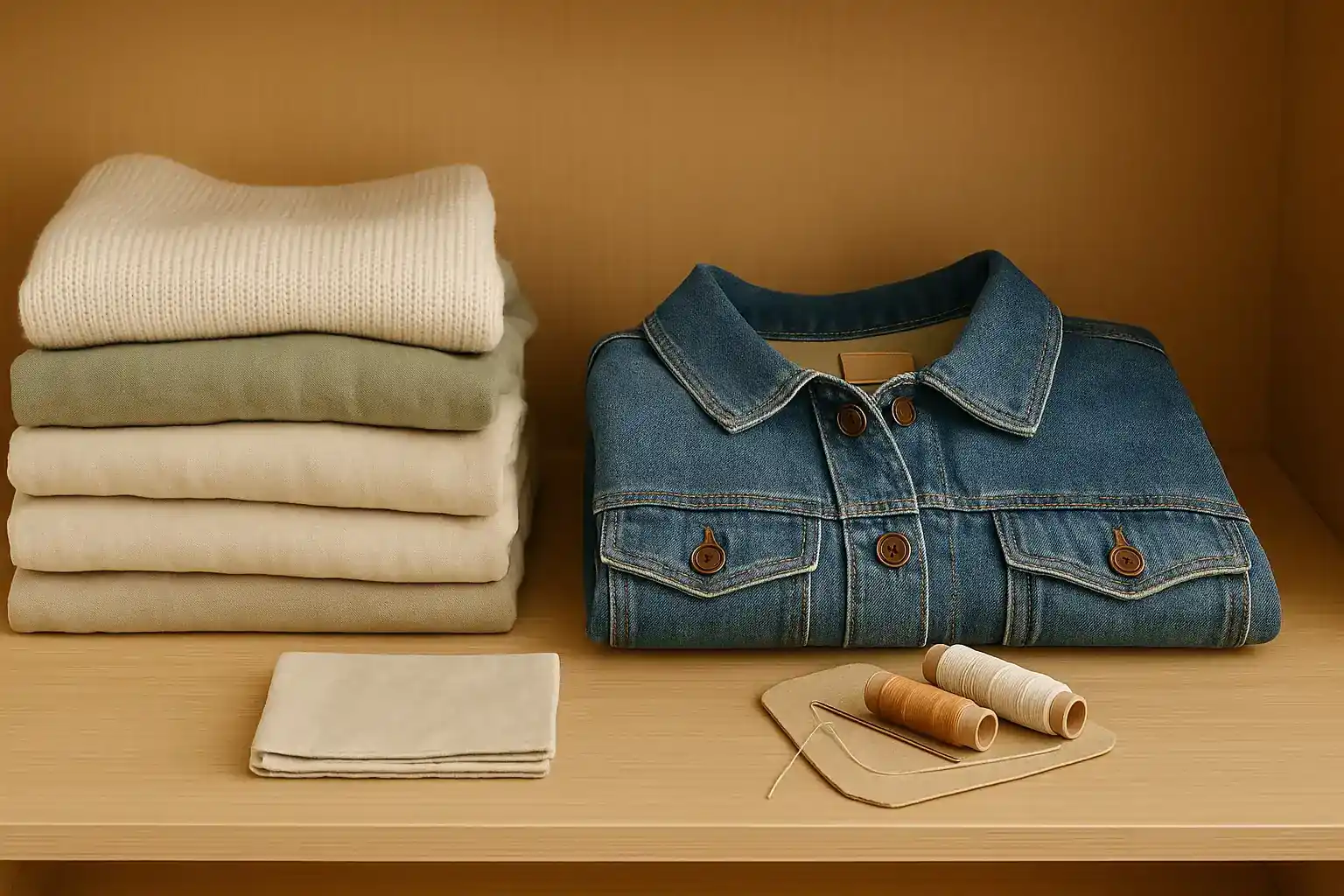Refresh Your Wardrobe, Save the Planet: How to Host a Successful Clothing Swap Event

Feeling like your closet is stale, but the thought of contributing to fast fashion waste leaves you cold? Enter the clothing swap! A clothing swap is a fantastic way to declutter your closet, find "new" treasures, connect with friends or community members, and strike a major blow for sustainable fashion – all while having fun.
Hosting a swap might seem daunting, but with a little planning and these practical tips, you can throw a successful event that leaves everyone feeling stylish and sustainable. Think of it as a party with a purpose!
Here's your step-by-step guide to hosting a successful clothing swap event:
Step 1: Define Your Swap (The Nitty-Gritty Planning)
Before you set a date, decide on the scope and rules of your event.
- Guest List/Size: Are you hosting a small swap with a close group of friends (easier to manage), or a larger community event? The number of participants will influence your venue and organization. Aim for at least 5-10 participants for a worthwhile selection of clothes.
- Who is it for? Women's clothes? Men's? Kids'? A mix? Be clear in your invitation.
- Date and Time: Weekend afternoons or early evenings often work best. Allow enough time for setup, swapping, and mingling (2-3 hours is usually sufficient for the swap itself).
- Location: Your living room or backyard can work for a small group. For larger swaps, consider a community room, a rented space, or even a supportive local business. Ensure there's enough space for displaying clothes and for people to move around comfortably.
- Rules of Engagement: This is CRUCIAL for a "successful" swap where people find usable items.
- Item Quality: Stipulate that all items must be clean, gently used, and in good condition (no rips, stains, missing buttons, broken zippers, or significant pilling). Emphasize bringing items you'd be happy to receive.
- Item Quantity: Set a minimum and maximum number of items per person (e.g., bring at least 5, but no more than 15). This manages inventory and ensures fairness.
- Item Type: Will you accept shoes, accessories, bags, or just clothing? Be specific.
- The Swap System: How will people "pay" for items?
- Ticket System: The most common and fairest. Participants get one ticket (or point) for each acceptable item they bring. They can then "purchase" items using their tickets. This prevents someone from bringing one item and taking ten.
- Free-for-All: Everyone brings clothes and takes what they want. Can work for very small, casual swaps among close friends with similar styles, but less fair for larger groups.
- Tiered System: Give items different point values based on type or perceived value (e.g., a t-shirt = 1 point, a dress = 2 points, a coat = 3 points). More complex, usually better to keep it simple initially.
Step 2: Spread the Word (Invitation & Education)
Get people excited and informed!
- Create an Evite, Social Media Event, or Email: Clearly state the purpose (clothing swap for sustainable style!), the date, time, location, and all the rules you decided in Step 1 (especially about item quality and quantity/ticket system).
- Explain the "Why": Briefly mention the sustainable benefits of swapping to inspire participants.
- Give a Deadline for RSVP: This helps you estimate numbers for setup.
- Set a Drop-off Time (Optional but Recommended): Ask guests to drop off their items 15-30 minutes before the official swap start time. This allows you time to sort and display everything before people start "shopping."
Step 3: Prepare the Space (Setup is Key!)
Make your swap feel like a pleasant shopping experience, not just a pile of clothes.
- Clear and Organize: Designate areas for different categories (tops, bottoms, dresses, outerwear, accessories).
- Provide Hanging Space: Use clothing racks, garment racks, or even sturdy curtain rods between two chairs. Hangers make Browse much easier than digging through piles.
- Use Tables: For folded items (like sweaters or t-shirts if you don't have enough hangers), jeans, and accessories.
- Create Fitting Areas: Set up a few private spots where people can try things on. A spare bedroom, a corner shielded by a screen or sheet, or even just designating a bathroom can work. Make sure there's a mirror!
- Set up a "Check-in" Station: This is where guests drop off their clothes, you do a quick quality check (politely reject items that don't meet the criteria), count the acceptable items, and give them their tickets/points.
- Ambiance: Put on some music, offer some simple snacks and drinks. Make it a fun, relaxed atmosphere.
Step 4: The Swap Event (Game On!)
It's showtime!
- Welcome and Reiterate Rules: As guests arrive, welcome them, direct them to the check-in station, and quickly explain how the swap will work, including the ticket system and fitting room locations.
- Sorting & Displaying (if drop-off wasn't pre-event): If people bring items right at the start, have designated spots for them to place their clothes by category. Get a few early birds to help sort!
- Browse Period (Optional): For larger swaps, you might allow a 15-20 minute Browse period where people can look but not yet take items. This prevents a mad rush and gives everyone a chance to see what's available.
- Open the Swap: Announce when the swap officially begins!
- Keep Tidy (if possible): Gently encourage guests to re-hang or re-fold items they don't want, keeping the displays neat.
- Be a Host: Mingle, help people find things, answer questions, and keep the energy positive.
Step 5: After the Swap (The Sustainable Wrap-up)
The event isn't over until the leftovers are handled responsibly.
- Gather Leftovers: Once the swap winds down and guests have taken what they want (using their allocated tickets/points), collect all the remaining items.
- Plan for Leftovers: Have a plan in place beforehand:
- Donate: The best option for usable clothing. Research local charities, shelters, or non-profits that accept clothing donations. Ensure the clothes are still in decent condition for donation.
- Textile Recycling: For items that aren't suitable for re-wearing (e.g., minor damage, pilling, etc.), find local textile recycling drop-offs. Do not put clothes directly in curbside recycling bins unless your local program specifically accepts textiles.
- Host a Second Swap: If there are many desirable items left and participants agree, you could potentially plan a follow-up mini-swap or giveaway.
- Clean Up: Restore your space.
- Thank Everyone: Send a quick thank you message to all participants, perhaps sharing the total number of items swapped or an estimate of the environmental impact avoided.
Making Your Swap "Successful"
Success isn't just about having lots of clothes. It's about:
- Quality over Quantity: Ensure the items swapped are actually wearable and desirable. Strict rules at check-in are key.
- Everyone Finds Something (Ideally): The ticket system helps with fairness, but managing expectations is also important. Not everyone will find a perfect item, but the goal is for most people to go home with something they love.
- Fun Atmosphere: Make it a social event! Good company, a relaxed setting, and a shared activity make for a memorable time.
- Environmental Impact: Celebrate the fact that you collectively diverted clothes from landfill and extended their lifespan.
Hosting a clothing swap is a tangible way to participate in the circular economy and build community through sustainable action. It's a win for your wallet, a win for your style, and a major win for the planet.
So, gather your gently used gems, invite your friends, and get ready to swap your way to a more sustainable and stylish wardrobe!
Related Blogs

10 Transformative Wardrobe Swaps for a Lighter Environmental Fashion Footprint
Learn how to reduce your fashion footprint with impactful wardrobe swaps.

Wrap Yourself in Responsibility: Choosing Sustainable Alternatives to Acrylic Sweaters
Upgrade to durable and breathable wool (certified farms), alpaca, or Tencel-blend knits.

Decoding Fabric Labels: What's Really Sustainable?
Insights on decoding fabric labels in a sustainable way.

Outsmarting the Dry Cleaner: Choosing Machine Washable Naturals for a Toxin-Free Wardrobe
Avoid toxic PERC solvents by opting for machine washable organic cotton and linen clothing.

Step Lightly: Choosing Sustainable Alternatives to Nylon Stockings
Opt for recycled nylon, biodegradable, or ladder-resistant hosiery for longer wear and less waste.

Fastening the Future: Choosing Sustainable Alternatives to Plastic Buttons
Opt for biodegradable coconut shell, corozo, or wood buttons for eco-conscious clothing.
Stay in the Loop
Get tips and insights tailored to your interests — no spam, just sustainability.